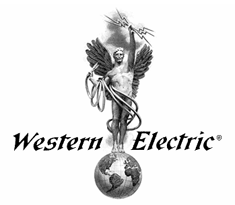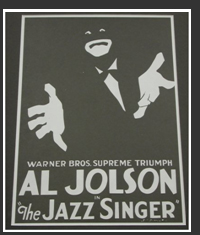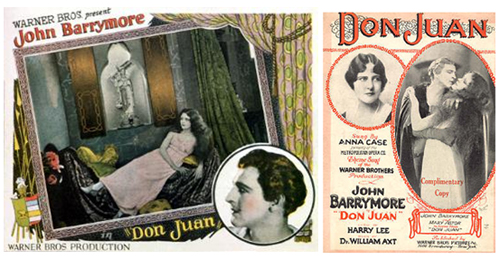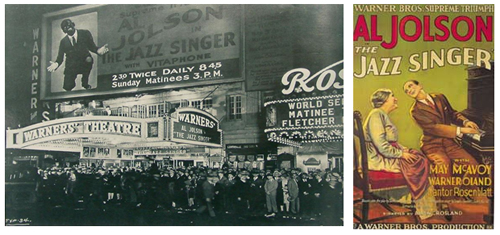

 |
 |
Western Electric Company invented the technology that brought sound to Hollywood in the 1920s. Originally, sound for a motion picture was recorded on disks then replayed on a large turntable that was synchronized with a film projector.
Western Electric Company attracted the attention of a second-tier motion picture studio called Warner Bros., and the two companies formed a joint venture, the Vitaphone Corporation, to experiment in the production and exhibition of sound motion pictures.
Warner Bros. became the first studio to adopt the new technology, calling it "Vitaphone." In 1926. Four months later, the new system, called Vitaphone, debuted with the opening of Don Juan, starring John Barrymore, at the Wamer's Theatre in New York City on August 6, 1926.
Preceeding the film were a series of short sound films, rather than the usual live vaudeville acts. As for the main feature, an electrical sound system--carrying the recorded strains of the New York Philharmonic--replaced accompaniment by live musicians.
The system was a hit, even if the film wasn't: Quinn Martin wrote in the New York World, "You may have the 'Don Juan.' Leave me the Vitaphone." The film program was treated as a legitimate concert hall presentation with eight short Vitaphone films starring the "greatest galaxy" of performing artists of the day,
including Metropolitan Opera tenor Giovanni Martinelli, violin virtuosos Mischa Elman and Efrem Zimbalist, and Al Jolson singing "Mammy" and "April Showers." To round out this introductory program, Warner Brothers selected their greatest star and biggest feature to date, JOHN BARRYMORE in Don Juan.
The film features the first synchronized musical soundtrack - with sound effects. No dialogue! The result was a thunderous ovation for the new Vitaphone process and the sound film. Talking Motion Picture was a motion picture with synchronized talking and sound , as opposed to a silent movie and with only sound like Don Juan. Although not the first, the most famous of the early talkies was The Jazz Singer in 1927.
 The Jazz Singer contained only a few minutes' worth of dialogue, most of it improvised. The rest of the film's soundtrack was instrumental musical accompaniment and sound effects, with most of the dialogue presented through the standard caption cards prevalent in silent movies of the era. The songs and dialogue sequences were enough, however, to create a sensation among moviegoing audiences of the day. The movie opened on October 6, 1927 and was a sensational box-office hit, proving to Hollywood and to the world that "Talkies" were profitable. The first honorary Academy Award for technical achievement was presented to the Warner Brothers for "producing THE JAZZ SINGER, the outstanding pioneer talking picture, which has revolutionized the industry."
|

